In the middle of the wild honey collection season, we had the opportunity to experience the arduous journey of crossing the forest and wading through streams to follow the bee tracks to protect the forest and collect honey - the work that the "experienced" bee hunters here still do!
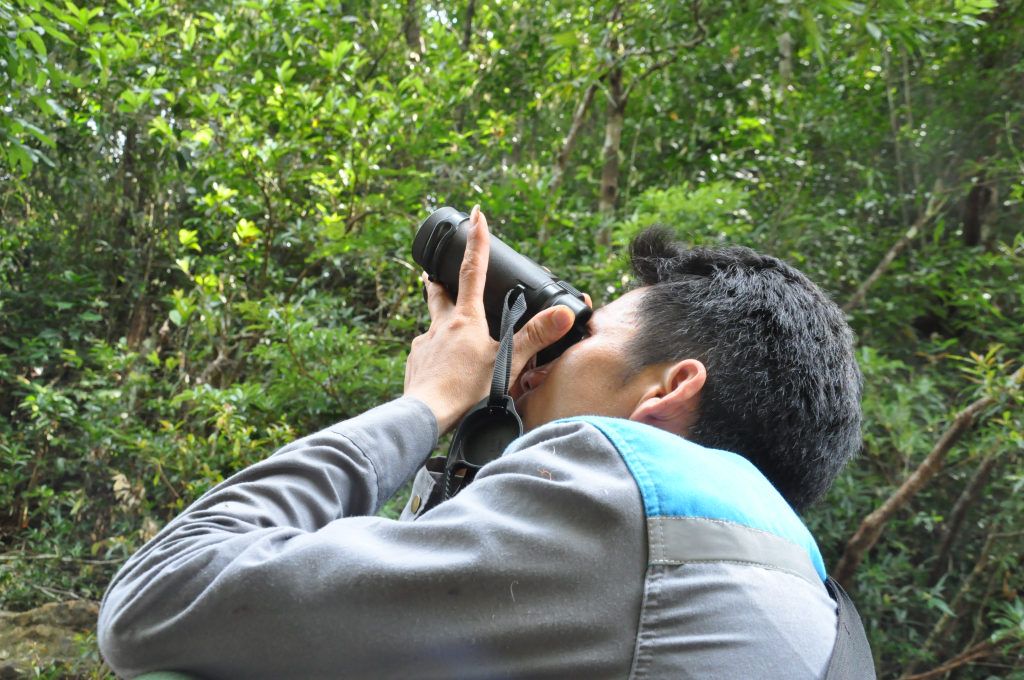
Journey following the wild bee trail
After many days of waiting, Mr. Truong A Sam, a young but experienced bee hunter in Tai Pho village, Quang Duc commune, and 4 other bee hunters arranged for me to join a group to explore the journey of following wild bees... to collect honey.
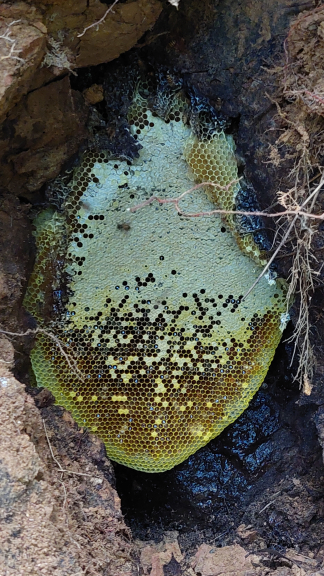
After a while from Quang Duc commune, following the lake path, we arrived at the mountain forest area of 72-chamber waterfall, in the territory of Hai Son and Bac Son communes (Mong Cai city). In the sound of cicadas chirping, the buzzing of honey bees working day and night to build their nests, pointing to the majestic forest, Mr. Sam introduced us to one of the familiar bee hunting "areas" of many beekeeping groups, including his group.
From the forest entrance, while following the forest trail, wading through streams, occasionally reaching high points or stream areas, Mr. Sam and Mr. Truong Hoa Dong raised the binoculars to their eyes, keeping a quiet space to look into the space to follow the bee tracks. According to Mr. Sam, bee hunting is now also supported by technology, so it is less difficult. Previously, when they were not equipped with binoculars, he and other bee hunters had to strain their eyes to see and calculate the bee's flight path, following each step of the bee's honey collection and water drinking journey to find the beehive. But since using binoculars, bee hunters only need to find an open space, climb up a tall tree or a stream to light the bee's path to work. When discovering bees behind the lens, with just a little time to observe the bee colony working, experienced bee hunters like Mr. Sam can accurately calculate the location of the bee hive with an error of only about 1 to a few meters.
According to Mr. Sam, for many years now, his group has only hunted for the hibiscus bees - the bee species with the best quality honey today. Hibiscus bee hunting is seasonal, lasting from February to October every year. After hours of searching for traces of the bees, the group has not yet discovered the journey of any bees. According to the experience of these bee hunters, on a hot, windless day like today, the bees fly very high and very fast, so it is very difficult to detect their journey. From the top of a tree about 20m high, Mr. Sam called down to ask for the time at 9:30. According to Mr. Sam, if they have not discovered the bees at this time, they risk having to "return empty-handed" because it is almost time for the bees to take a lunch break. Mr. Sam decided to split into 2 groups. Each group followed a forest on either side of the stream, determined to find the bees.
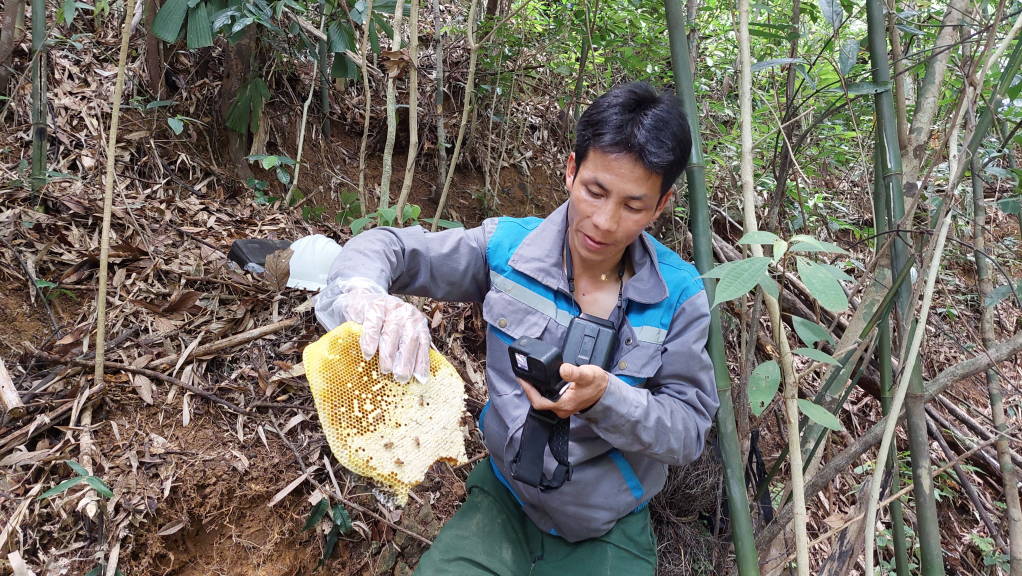
I followed Sam's group, about 30 minutes later, from the stream bed, pointing up to the steep cliff in front of us, Sam said that there was a rock bee nest (honey bee) up there. Normally, the group does not hunt for this type of bee because the quality is not as good as the honey bee, but to satisfy my curiosity and excitement, Sam and Tai nimbly followed the vines, quickly reaching the bee nest.
As soon as he saw the beehive area in a rock cavity, with many years of experience hunting bees, Mr. Sam said that this was a fairly large beehive. Reaching out to burn some dry leaves, Mr. Sam blew gently to send a little smoke into the nest. A dense swarm of bees flew out from the nest, surrounding us. After about 10 minutes of gently prying away the layers of dirt and rocks outside the nest, Mr. Sam said he "heard the sound of beeswax breaking". Stopping, brushing off all the dirt and dust outside the nest, Mr. Tai peeled off the outer stone to reveal a golden honey cake. Holding the honey cake in his hand, Mr. Sam let me taste it and did not forget to tell me to prepare a bottle of water in advance because this honey is very sweet. The sweetness is so deep that people who eat it, especially those who are tired while walking in the forest, can easily choke on this piece of wild honey. If there is no water, choking on wild honey is very dangerous.
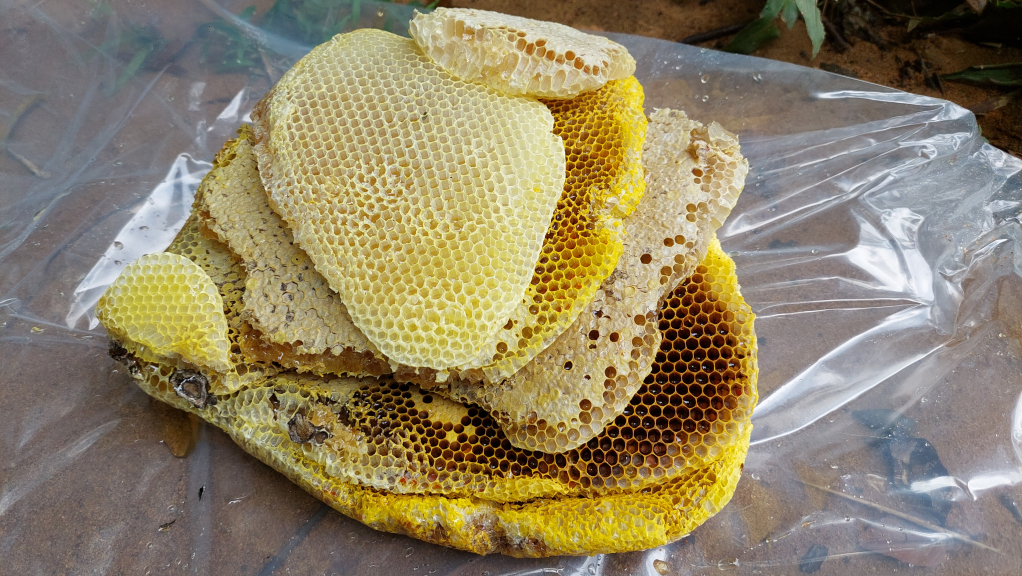
Although the first hive we hunted was not a hive of the beekeepers’ intended type, one honey cake after another was taken out of the hive, making my beekeeping journey full of surprises and new discoveries. A wild bee nest with many honey cakes. Rock honey weighs from 1.4-1.6 kg/liter, rock honey is thicker and heavier than rock honey, and has a darker color… are what the beekeepers told me after taking the honey cakes out of the hive.
Taking the honey out of the hive, the two bee hunters left the honey stalks and carefully inserted them back into the hive entrance so that the bees could continue to live. According to Mr. Sam, this is what bee hunters do to protect the forest and grow honey. According to the characteristics of the bee colony, as long as the hive and the honey stalks remain, the bees will still live and build the hive. After only 1-2 months, this hive will have honey again.
The first rock bee nest gave us about 8kg of honey, but according to these bee hunters, this was a “tiny” nest that they normally don’t hunt. They only hunt for beehives with honeycombs that weigh up to tens of kg. According to Mr. Sam, almost every day when hunting bees, his group hunted several nests, sometimes up to 7-8 nests. There were nests as big as a bed sheet, or as big as a coffee table. The largest nest he hunted at the beginning of the season was more than 3m long and yielded nearly 40kg of honey.
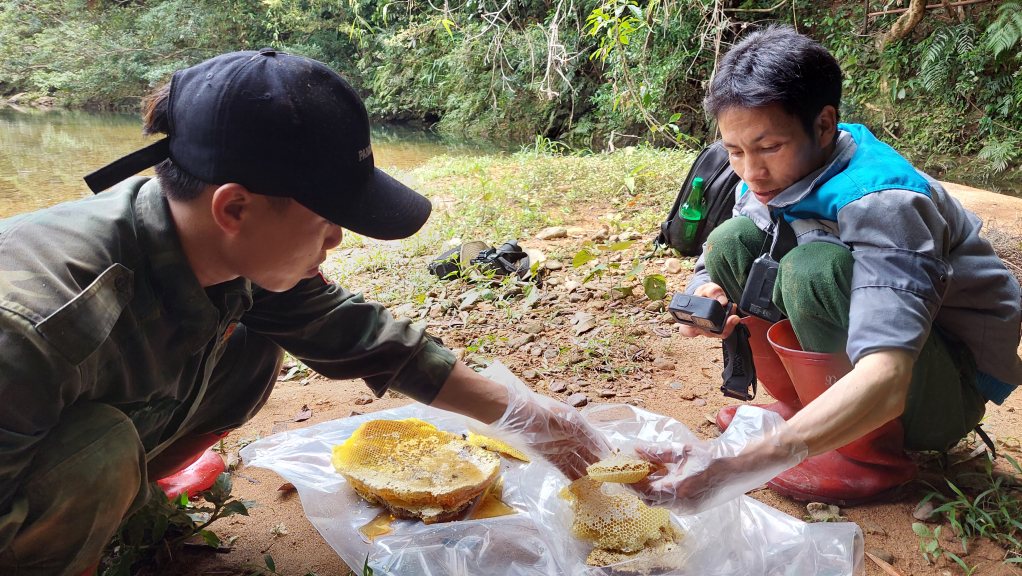
It was almost noon when we finished the first beehive. At this time, the sky was covered with dark clouds and thunder and lightning. Mr. Sam urged us to hurry up and continue searching for bees, lest it rain and we miss the chance to catch the bees. After climbing a tall tree, Mr. Sam identified 3 beehives about 600m from where we were standing. Mr. Sam quickly led us to a tree about 20m high and showed Mr. Tai that there was a small beehive on top of the tree. Normally, we don't catch bees, but today we will go up and cut them down for me to see.
Carrying with him a handful of burning sticks to chase away the bees, Mr. Tai quickly climbed up the tree and brought down a golden honey cake weighing about 5kg. Bringing the honey cake down from the tree was also the moment when the jungle rain came, interrupting our bee hunting journey. Crossing the streams to a safe location in case the stream water rose and we had to stay in the forest overnight, Mr. Sam gently moved and tilted the small tree branches to spread rain cloth to make a shelter. The torrential jungle rain for hours made our wild bee hunting journey stop by the stream in regret.
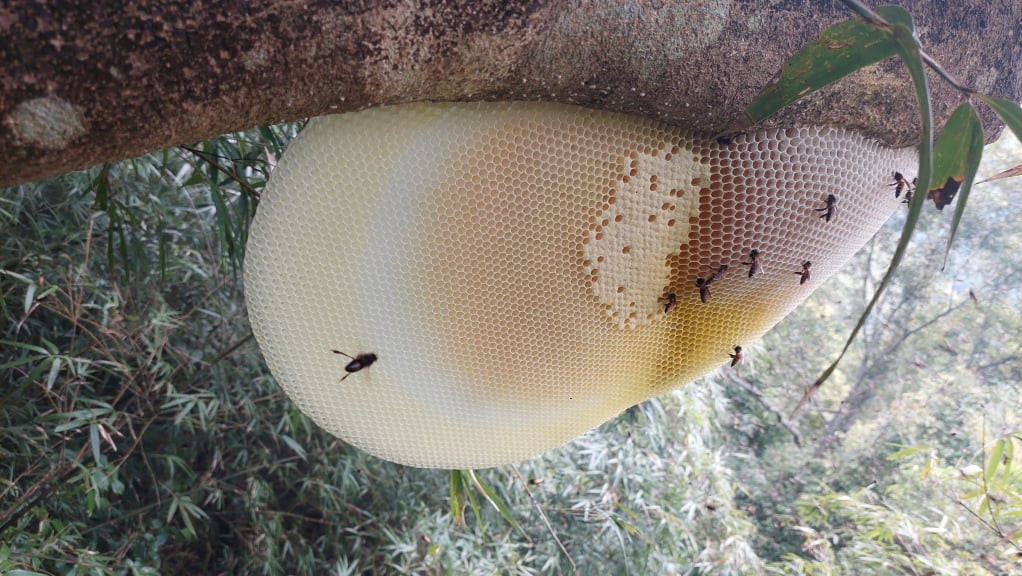
During the journey to hunt for wild honey, the bee hunters told us about the hardships and dangers that always lurk around us. Just a little carelessness, a little subjectivity, and lack of caution can cost us our lives.
Mr. Sam shared: Anyone who enters the honey hunting profession must be brave. If you encounter a case of being stung by a fierce bee nest, you must be extremely calm and endure the pain to handle it, and absolutely must not let go. Many times I encountered a fierce bee nest and was stung, my face and hands were swollen, and my whole body ached. But now, when I am stung by a bee, I almost don't feel anything.
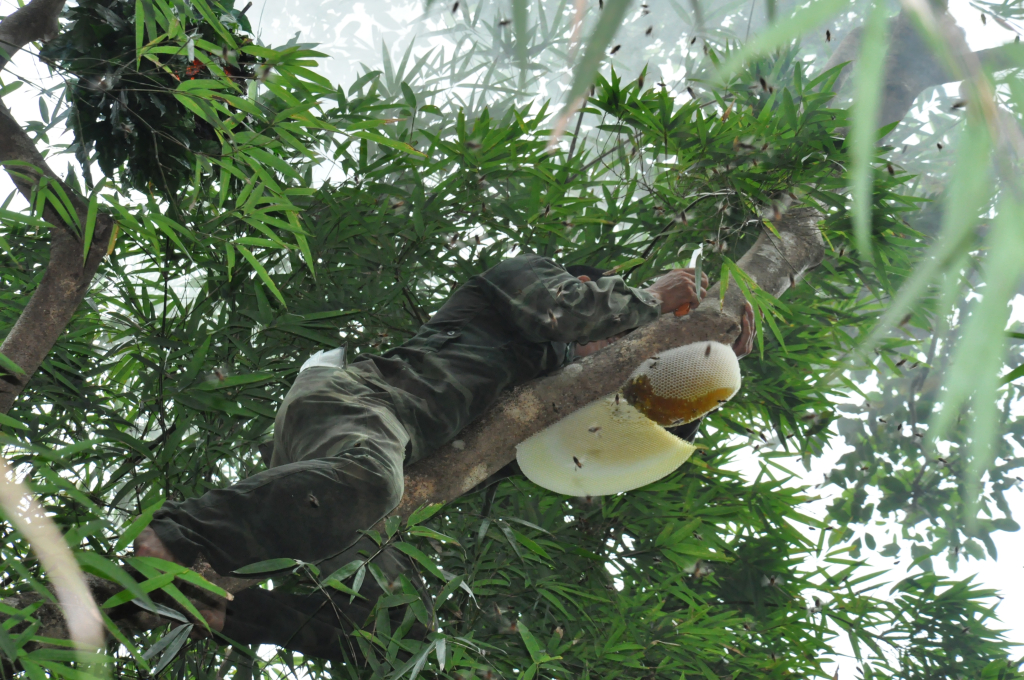
Protect the forest and... raise honey
Although the job of collecting wild honey is hard and dangerous, it brings a fairly high income to many bee hunters. Because pure wild honey has many benefits, it helps increase the body's endurance and cures respiratory diseases, coughs, stomach, sore eyes, sore throats, cosmetics... In addition, beeswax also has the effect of making oil for lighting, applying to crossbows and slingshots to make them shiny and durable, has the ability to disinfect, and heal scars quickly. Therefore, wild honey is always sought after by many customers anytime, anywhere and many people consider it an effective panacea.
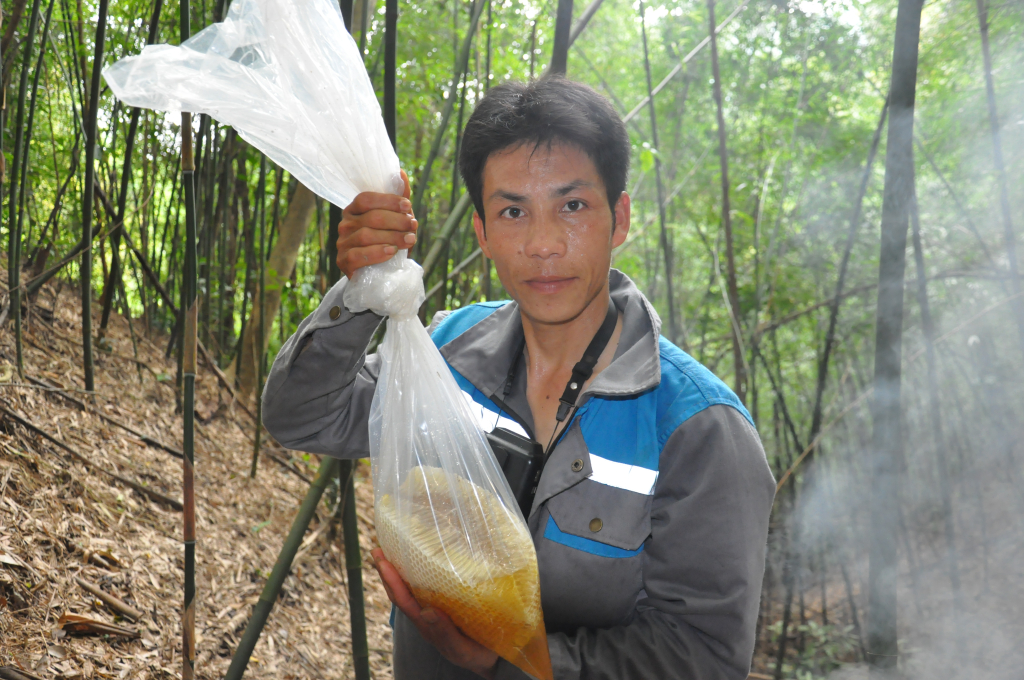
Since the beginning of the season, Mr. Sam’s honey hunting group has harvested hundreds of tons of wild honey to sell to customers outside the district. Wild bee hunters like Mr. Sam seem to be permanent forest protection collaborators, patrolling the forest while collecting rare drops of honey.
People who specialize in collecting wild honey like Mr. Sam always keep two things in mind: Protecting the forest and raising honey. Therefore, throughout the journey, every time they light a fire to burn the smoke, they always put out the fire, wait until the smoke is completely gone before leaving. Mr. Sam said: People who collect wild honey, living on the "forest's blessings", must have a conscience, responsibility and principles of practice. Exploiting honey but not destroying the bee colony, because exploiting it affects the ecological balance, which is also destroying their own source of life. Honey collectors look at the golden wax patches to assess the amount of honey, if the hive has a lot of honey, they will exploit it immediately, if the hive is new, if it has little honey, they will save it for later exploitation. When collecting honey, absolutely do not destroy the hive, but open it up to create a path for the bees to continue to reproduce, grow, and produce sweet honey in the following seasons. Respecting the bee colony is also a way to respect your profession, only then can you enjoy and preserve the precious essence of the mountains and forests.
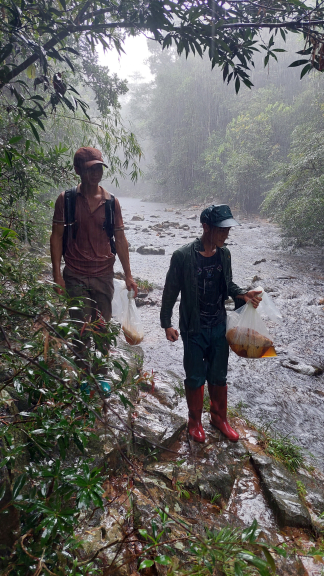
Being attached to the bee hunting profession since childhood. As a child, he hunted bees to sell to buy books. When he grew up, he became a professional bee hunter to support his family. Although he is only 30 years old, Mr. Sam has trained dozens of other experienced bee hunters in the area. The bee hunters here always keep in mind to protect the forest and raise honey during their "practice". As experienced bee hunters, they hunt bees during the day and at night they look forward to the morning to go into the forest. It has been like that for decades. Being attached to the forest, for the past 2 years, Mr. Sam has created a youtube channel called QUANG DUC FOREST HONEY with hundreds of thousands of views for each video he posts. This youtube channel has brought him a stable income from several million to more than ten million VND per month and hundreds of customers across the country order his wild bee products.
Source


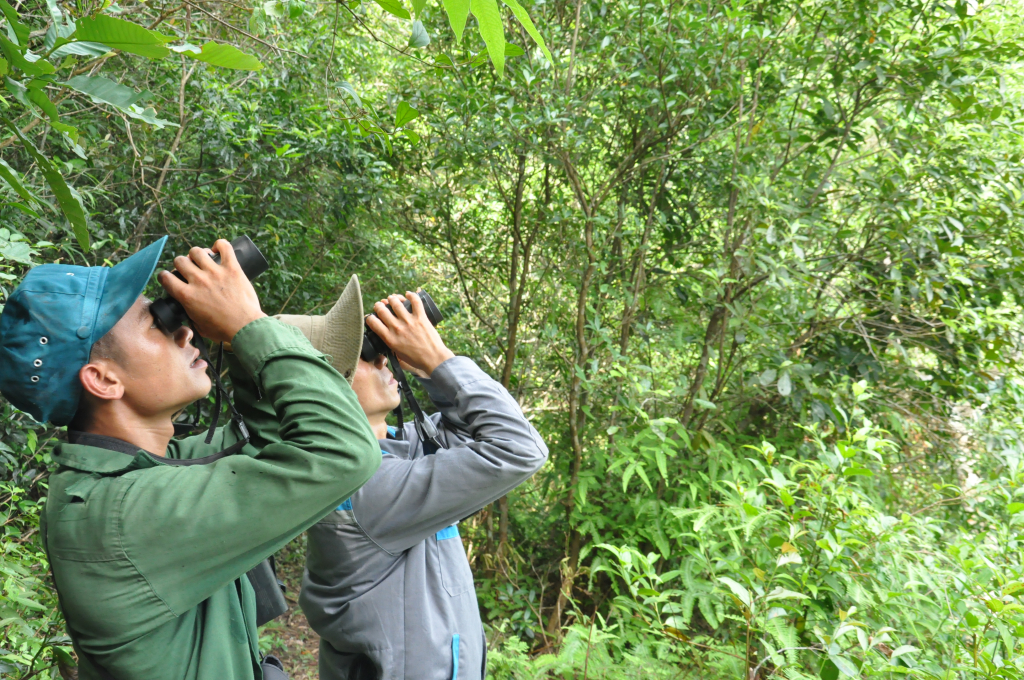

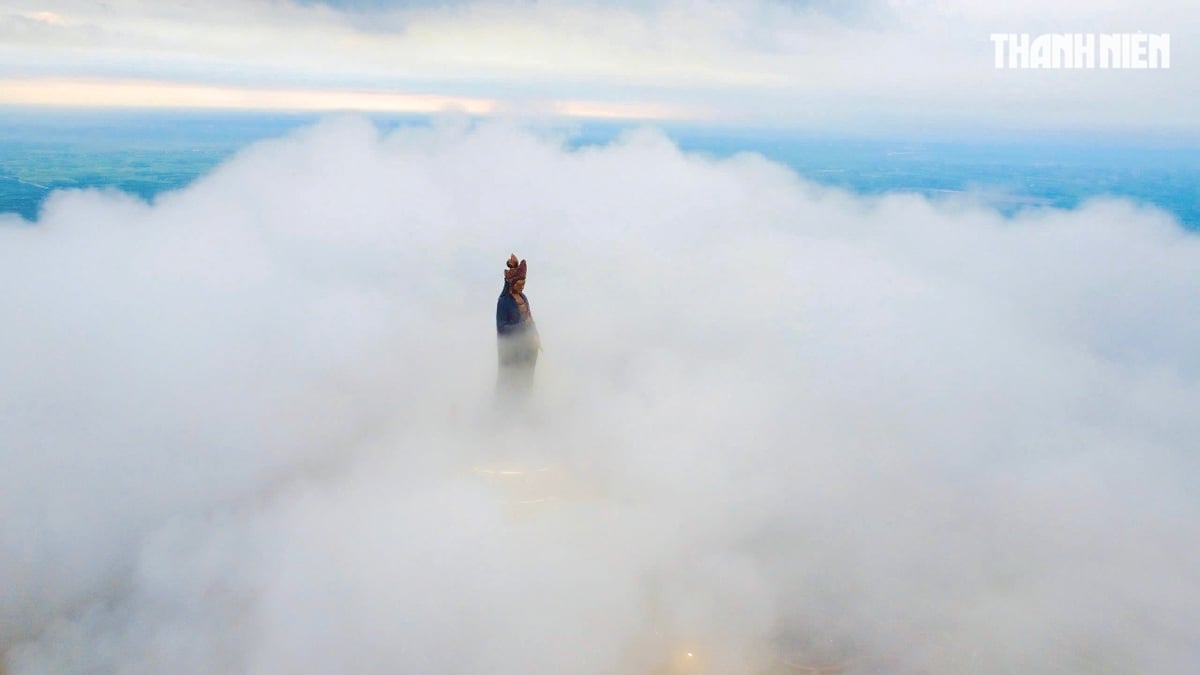

![[Photo] Prime Minister Pham Minh Chinh chairs conference to promote public investment growth momentum](https://vphoto.vietnam.vn/thumb/1200x675/vietnam/resource/IMAGE/2025/5/20/7d1fac1aef9d4002a09ee8fa7e0fc5c5)
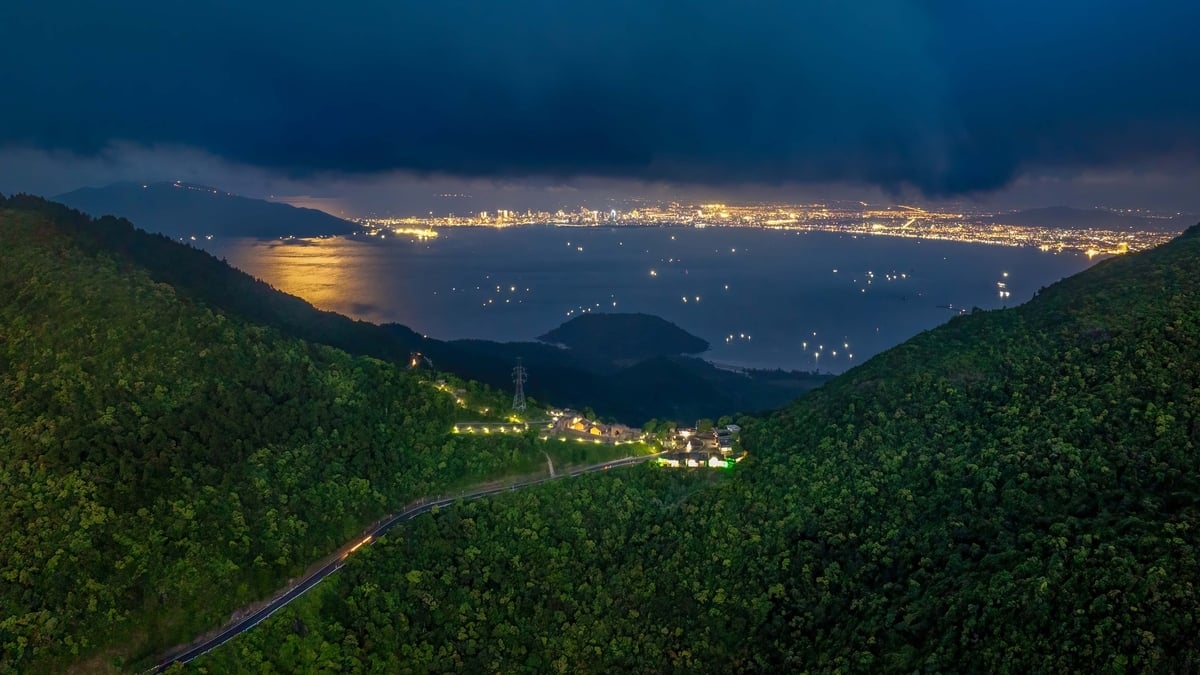

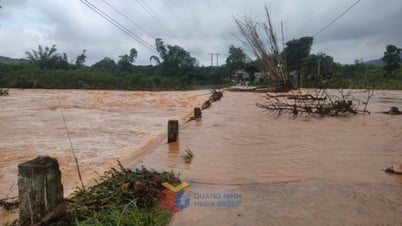












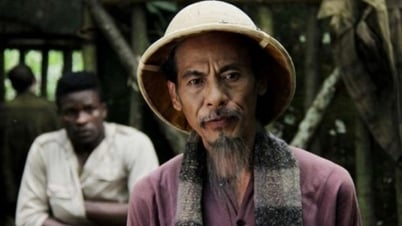
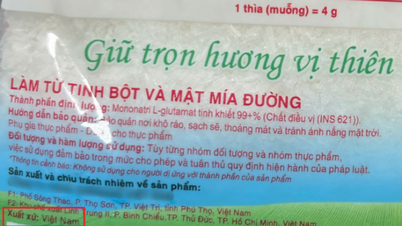
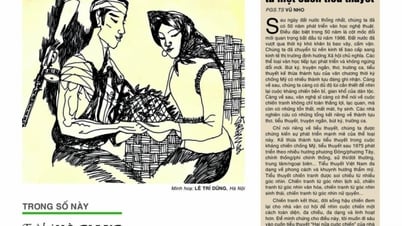








































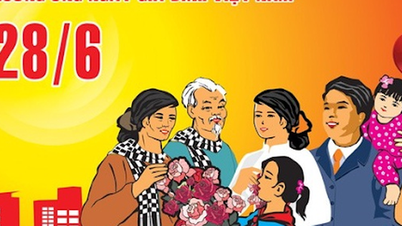
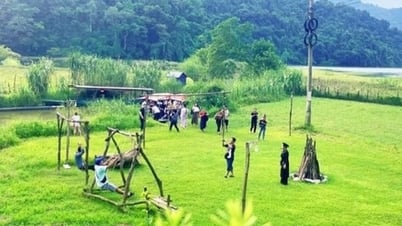
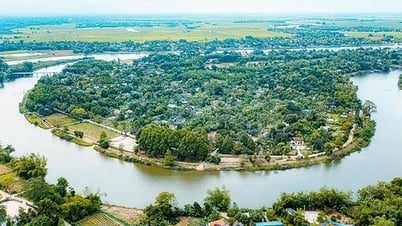

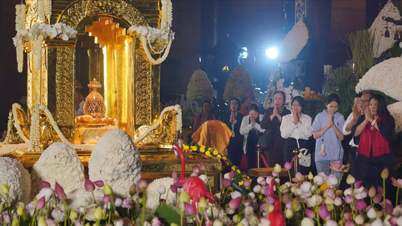






















Comment (0)